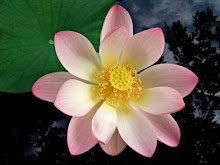
Blackberry
Rubus allegheniensis
Other Names Allegheny Blackberry, American Blackberry, Bly, Bramble, Bramble-Kite, Brambleberry, Brameberry, Brummel
Blackberry Herbal Use and Medicinal Properties
Blackberry is edible and medicinal. Used extensively by the Native American tribes, it had many other surprising uses. The leaf is more commonly used as a medicinal herb, but the root also has medicinal value. Young edible shoots are harvested in the spring, peeled and used in salads. Delicious Blackberries are edible raw or made into jelly or jam. The root-bark and the leaves are astringent, depurative, diuretic, tonic and vulnerary. They make an excellent alternative medicine for dysentery, diarrhea, hemorrhoids, and cystitis.
The most astringent part is the root. Orally, they are used to treat sore throats, mouth ulcers and gum inflammations. A decoction of the leaves is useful as a gargle in treating thrush and also makes a good general mouthwash. The presence of large amounts of tannins that give blackberry roots and leaves an astringent effect useful for treating diarrhea are also helpful for soothing sore throats. A medicinal syrup is also made from Blackberry, using the fruit and root bark in honey for a cough remedy.
Blackberry Habitat and Description
Blackberry is a thorny shrub or vine, perennial, native to Eastern N. America from Nova Scotia to Ontario, New York, Virginia and North Carolina south. It is found in dry thickets, clearings and woodland margins, fence rows, open meadows, roadsides in and waste places.
When the Blackberry flowers bloom in the wild it is a beautiful sight; hillsides and fields are covered with white flowers. The flowers are white, with five petals, and bloom in April and May. Blackberry plants have biennial stems; they produce a number of new stems from the perennial rootstock each year, these stems fruit in their second year and then die. The vines are long and very thorny, growing in groups or thickets. Blackberry vines branch and can grow up to 15 feet or more in length, and thickets can extend to hundreds of square acres in an area. They die off after 2 to 3 years but are usually retained in the thickets making them largely impenetrable. Blackberry Leaves are light green, serrate and palmate with 3 to five leaflets or fingers, the main vein on the back of each leaflet has thorns.
How to Grow Blackberries
Blackberry is easily grown in a good well-drained loamy soil in sun or semi-shade.
Plants - Simmons Plant Farm - All kinds of Berries
Blackberries were in olden days supposed to give protection against all 'evil runes,' if gathered at the right time of the moon. Since ancient Greek physicians prescribed the herb for gout, the leaves, roots, and even berries have been employed as a medicinal herb. The most common uses were for treating diarrhea, sore throats, and wounds. Native Americans made fiber, obtained from the stem, it was used to make a strong twine. Another use was as a huge barricade around the village made of piles of the thorny canes, for protection from 4 and 2 legged predators. A purple to dull blue dye is obtained from the fruit.Blackberry Recipe Ideas
Medicinal herb tea: To 1 ounce of the dried leaves and root bark, add 1 pint of boiling water, and steep 10 min., drink a tea cup at a time. Use to make jellies, jams, cobblers, and in any recipe where you would use raspberries.

Tidak ada komentar:
Posting Komentar